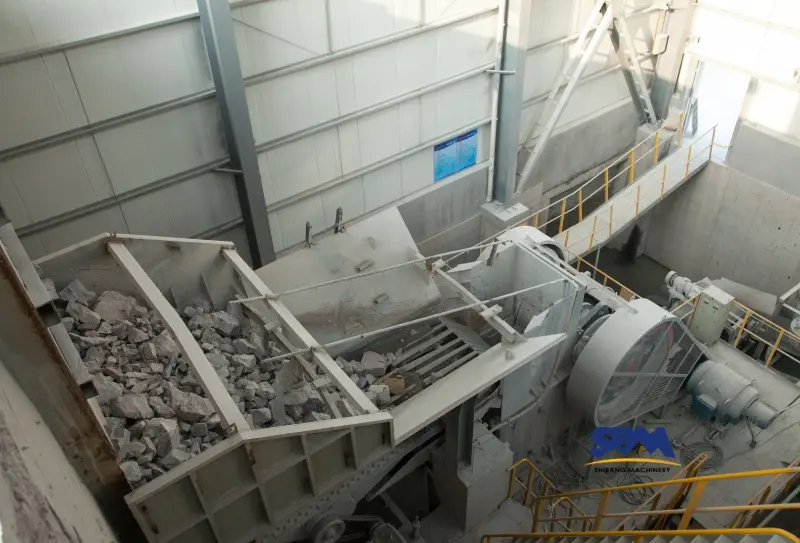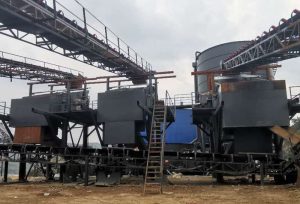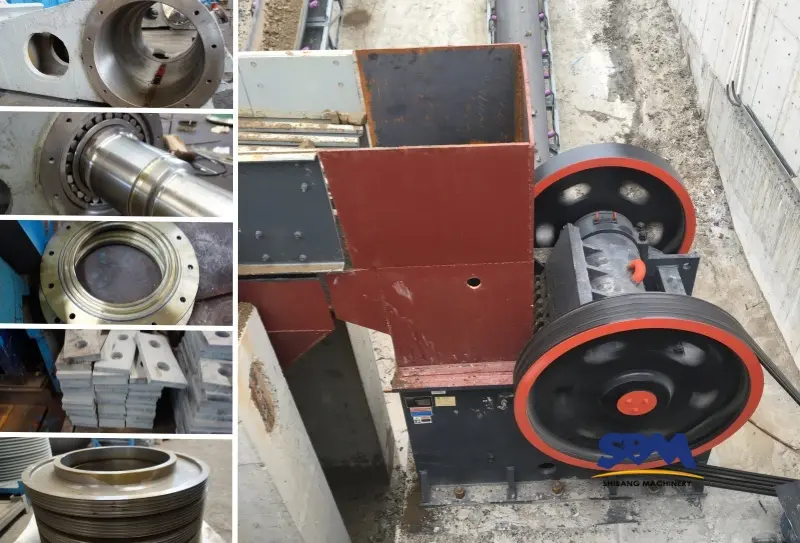E-mail: [email protected]
Comment la taille de l'alimentation affecte-t-elle les performances du concasseur rocheux?
Lors de l'opération de concasseurs de roche dans la production d'exploitation ou d'agrégation, Les opérateurs demandent souvent: “Pourquoi la taille de ce que je nourris est tellement important?” The relationship between feed material dimensions and rock crusher performance is more complex than a simple cause-and-effect scenario. Let’s break down this critical factor through real-world mechanics.

1. The Goldilocks Principle: Pourquoi “Just Right” Matters
Chaque concasseur à mâchoires has a designed optimal feed size range, typiquement 80-90% of the crusher’s gape width. Oversized rocks trigger a chain reaction of issues:
- Chewing vs. Écrasement: Stones larger than the chamber’s capacity cause “bridging” (Material jam), forcing the machine to repeatedly compress without proper breakage.
- Energy Vampires: Each unnecessary compression cycle wastes 15-22% more power according to industry studies.
Case in point: A limestone quarry in Texas saw a 37% throughput increase after implementing pre-screening to remove +10% oversize material.
Contenu connexe: Crusher à mâchoire pour le traitement du calcaire: Un guide de l'efficacité
2. Hidden Costs of Incorrect Sizing
Beyond visible production drops, improper feed dimensions create stealthy operational costs:
2.1 Wear Pattern Warfare
- Toggle Plate Stress: Oversized feed increases lateral forces by 2.3×, accelerating wear on critical components.
- Liner Lifespan: 20-50mm oversize rocks reduce manganese jaw plate durability by 40% ( field data).
Contenu connexe: Quelles sont les causes des dommages à la plaque de broyeur à la mâchoire?
2.2 The Efficiency Paradox
Contrary to intuition, smaller-than-optimal feed also harms performance:
- “Popcorn Effect”: Tiny particles bypass proper crushing, increasing recirculation load.
- 5-10% capacity loss occurs when <50% of feed meets the crusher’s “sweet spot.”
3. Practical Optimization Strategies
3.1 Pre-Crushing Screening Tactics
Implement a two-stage screening process:
- Grizzly Bars remove extreme oversize
- Tamis vibrant fine-tunes feed gradation
Pour la pointe: Use laser scanning to create 3D models of your feed material for stone crusher setting adjustments.
3.2 Real-Time Monitoring Hacks
Modern solutions combine IoT and traditional wisdom:
- Install belt scales with AI cameras to analyze feed size distribution
- Use acoustic sensors detecting “crunch frequency” – optimal crushing creates 80-120Hz sound signatures

4. When Adjustments Beat Replacement
Before considering machine upgrades, try these feed management tweaks:
| Adjustment | Expected Impact |
|---|---|
| Reduce CSS* by 10% | +15% throughput |
| Increase nip angle | Better grip on large rocks |
| Install wear liners | 30% longer service life |
*CSS = Closed Side Setting
A Canadian gold mine achieved 92% utilization rate by simply aligning feed size with rock crusher settings – no capital expenditure required.
Contenu connexe: Traitement du minerai d'or: Efficacité du broyeur à la mâchoire
5. The Future of Feed Intelligence
Emerging technologies are rewriting the rules:
- Smart Feeders using machine learning predict rock size from conveyor belt shadows
- Digital Twin Systems simulate how different feed profiles affect wear patterns
“Think of feed size as your rock crusher’s diet,” says Dr. Emma Lin, a leading comminution expert. “Balanced nutrition – proper sizing – keeps the equipment healthy and productive.”
By mastering feed dimension control, operations can unlock 18-35% higher profitability through combined gains in output, energy savings, and maintenance cost reduction. The key lies in treating feed size not as a fixed variable, but as a dynamic parameter to be actively managed.
🔧Pro Checklist:
- Monthly feed size distribution audits
- Real-time CSS monitoring via hydraulic sensors
- Operator training on visual feed assessment
Next time you hear your rock crusher laboring, souviens-toi: its performance isn’t just about horsepower – it’s about how wisely you feed that power.
Bureau du siège social
WhatsApp:+8615225176731
E-mail: [email protected]
Adresse: Non. 1688, Gaoke East Road, Nouveau quartier de Pudong, Shangai, Chine.
Site Internet: https://www.mill-sbm.com/




